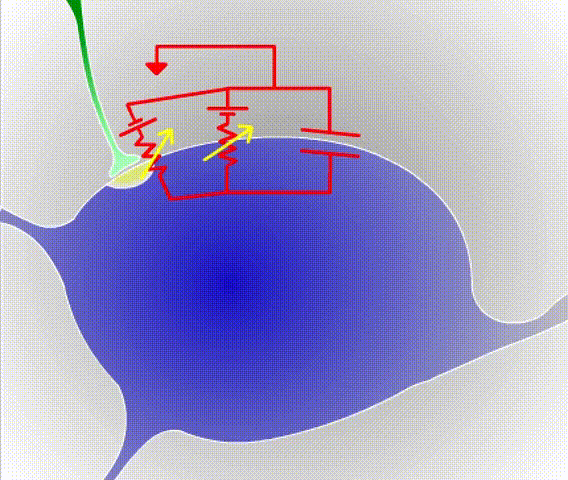Our Objectives - Three Complementary Approaches
In their quest to understand how cognition emerges at the behavioral level from mechanisms at the molecular level, researchers have pursued three approaches: Experiment, Theory, and Computation. Dissecting the brain experimentally uncovers its hierarchical organization (molecules, synapses, neurons, columns, areas, systems, and organism), but fails to provide insight into how these levels are integrated. Analyzing the brain theoretically explains behavior at one level using abstractions from the level beneath, but makes simplifying assumptions that must be validated. Simulating the brain computationally permits inclusion of molecular-level details while replicating organism-level behavior, but requires enormous amounts of data to constrain parameters and verify results. That these approaches complement each other means that progress requires advances on all three fronts.
Information must be integrated across seven levels of investigation spanning nine spatial scales—nanometer-sized ion-channels to meter-sized organisms.
Thanks to recent advances in neural imaging and recording techniques, researchers' ability to characterize the brain's structure and function experimentally trumps their ability to simulate its behavior computationally. Microelectrode penetrations measure voltage differences along fine neural processes, elucidating mechanisms underlying reception and transmission of electrical signals between neurons. Serial-scanning electron microscopes image fixed brain-tissue slice by slice, enabling the neurons' synaptic connectivity to be reconstructed. Two-photon microscopes image activity in the living brain layer by layer, mapping the behavior of thousands of neurons. These techniques are providing the copious data needed to constrain large-scale simulations.
The data required to constrain large-scale simulations is now available; the superpowerful computers required are not.
We are bridging the experiment–computation gap by building a computer that works like the brain—one that can serve as a tool to investigate brain function—feeding back and contributing to a fundamental, biological understanding of how the brain works. Technological developments in electrical engineering and computer science increasingly further the process of discovery in a variety of scientific fields, notably in the life sciences. Advanced technologies provide new tools to deepen the study of current problems in biology and neuroscience, but importantly can also enable a reformulation of the very approach taken towards answering these questions. Our research at the intersection of neurobiology and electrical engineering takes this technology-driven approach to scientific investigation by using existing knowledge of brain function to design an affordable supercomputer.
